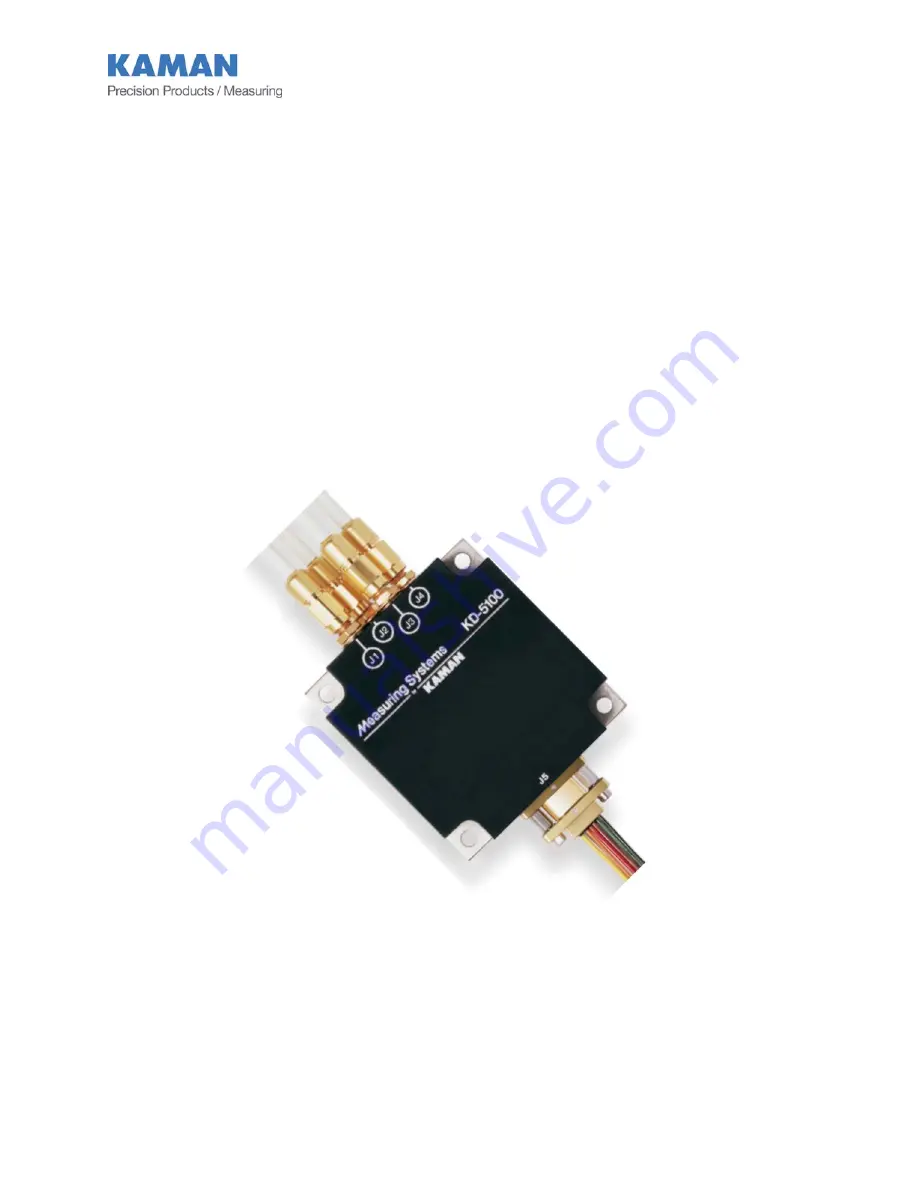
Copyright © 2015
Kaman Precision Products
PART NO: 860029-001
A Division of Kaman Aerospace Corporation
Last Revised: 01/06/15
217 Smith Street
Middletown, CT 06457
www.kamansensors.com
KD-5100
Differential Measuring System
User’s Manual
TABLE OF CONTENTS